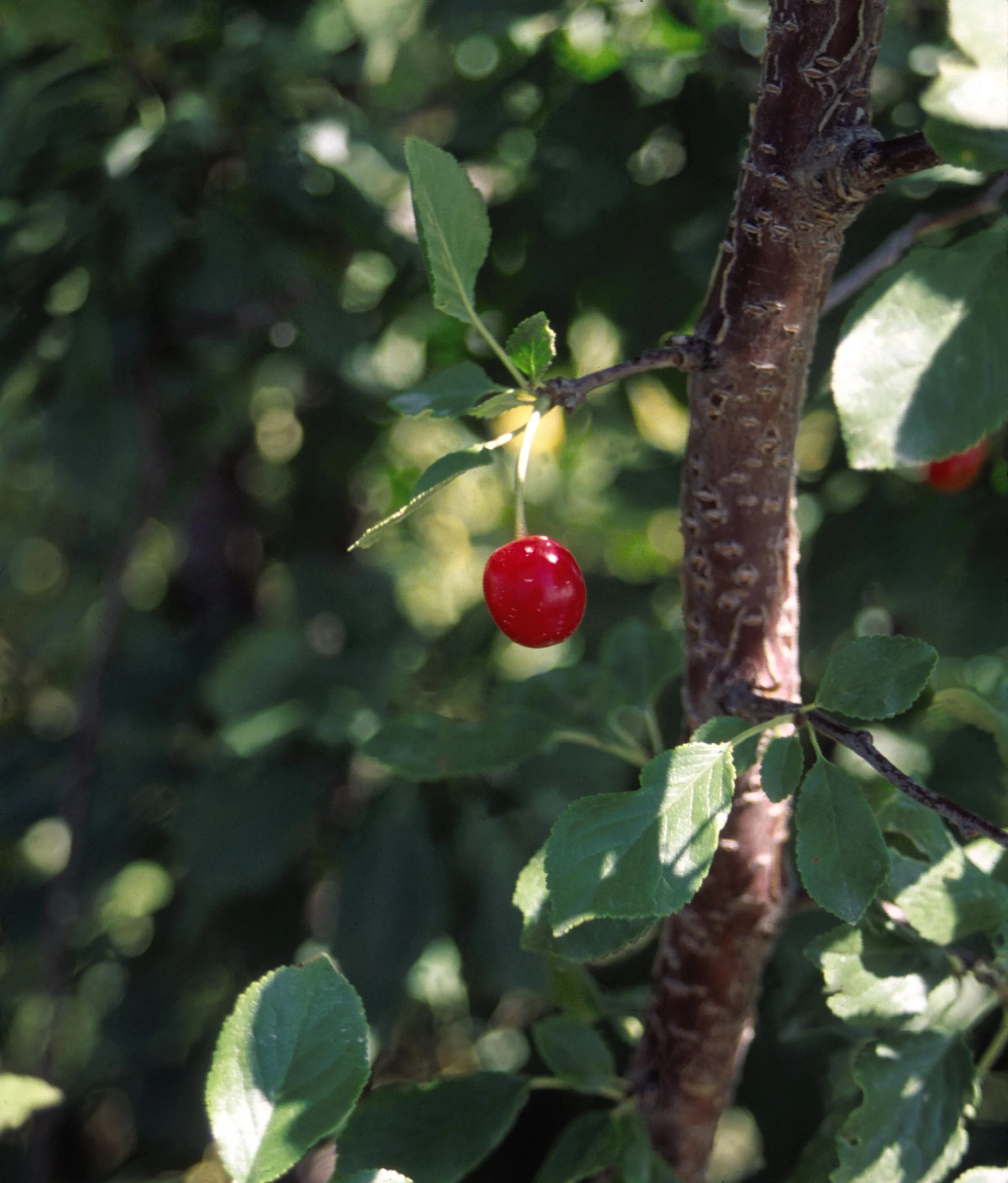Prunus / Cherry
prunus / cherry (fruit)
Perhaps one of the smallest trees these can almost scarcely be called a "tree". While cherry trees are plentiful throughout the United States here in our northern climates the only cherries we are able to grow are what are commonly referred to as "pie cherries". Most of the well known "sweet" cherries such as the ever popular Bing cherry are not winter hardy for our colder northern climates. There are however many hybrid cherries that are USDA Zone 4 that perform very well in sweetness tests.
evans bali cherry
Prunus cerasus 'Evans Bali'
Deep, dark red fruit 1" in diameter and excellent for baking and fresh eating. The fruit is much sweeter than other sour cherries. Extremely hardy buds.
Ripens in
Height: 15 - 20 ft
Spread: 10 - 12 ft
USDA Zone: 3 - 8
“Most of the well known “sweet” cherries such as the ever popular Bing cherry are not winter hardy for our colder northern climates.”
mesabi cherry
Prunus 'Mesabi'
Long stemmed, red-fleshed fruits with sugar content halfway between pie cherries and 'Bing' cherries. Pyramidal tree grows to a height of 12 feet. Fruit resembles 'Meteor' but pit is smaller. Blooms in early May.
Ripens in:
Height: 10 - 14 ft
Spread: 15 - 18 ft
USDA Zone: 4 - 8
north star cherry
Prunus 'North Star'
Genetic dwarf introduced by the University of MN in 1950. Red fruit with a small stone. Very productive. A sour pie cherry. Blooms in early May.
Ripens:
Height: 8 - 10 ft
Spread: 6 - 8 ft
USDA Zone: 4 - 8
CARE: POSITIVES & DRAWBACKS
POSITIVES:
We are currently working to improve this portion of our site. Please check back later
DRAWBACKS:
We are currently working to improve this portion of our site. Please check back later.
PRUNING:
The optimal pruning time for Cherry trees is late winter and early spring before leaves emerge.
For more on identifying old wood and new wood see our page on care of woody plants.







